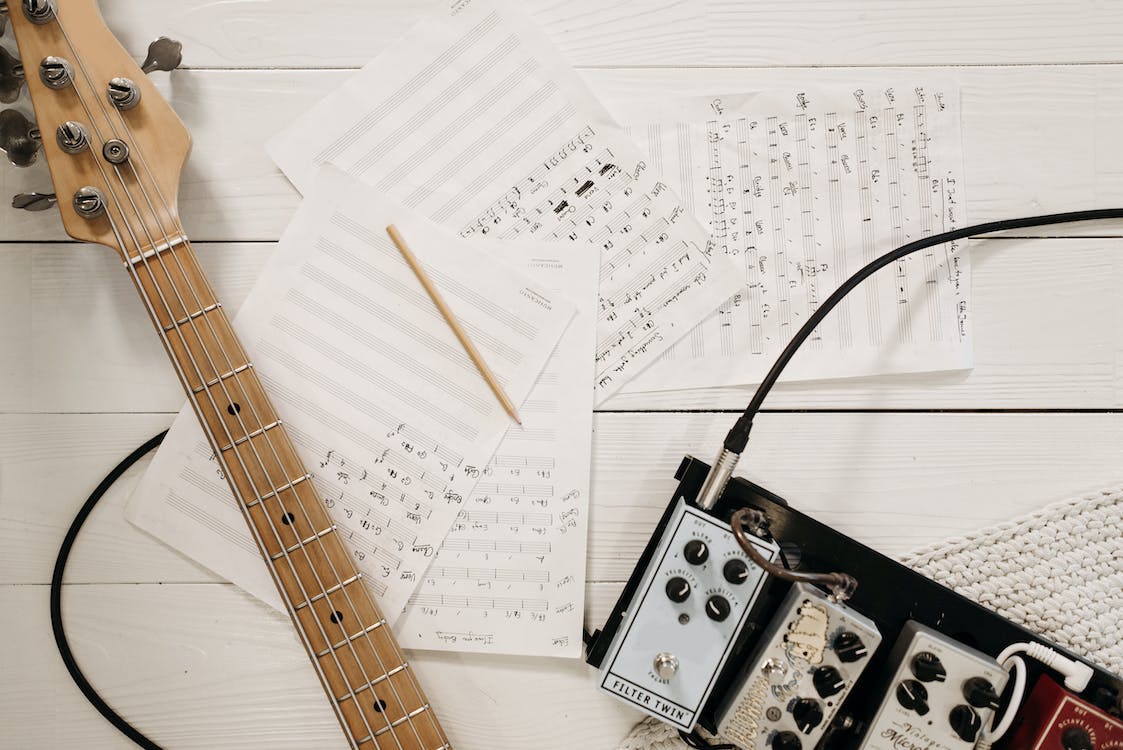During the earlier times, pedal boards have been the standard feature on pipe organs for about centuries. In fact, electromechanical organs like the Hammond organ has a pedal board. However, in the 1970s, electronic organ makers noticed that musicians seek for organs that they could take on a gig at bars or festivals. Consequently, to make organs more portable, makers replaced the heavy chassis organs with a detachable one.
Once the organ makers have made portable organs, manufacturers began to create bass pedals that could function separately from the organ console. With this, the 1970s standalone bass pedal was invented. This bass pedal could be used under an organ for several sets.
Bass Pedals are foot-operated pedal keyboards that had a range of one or more octaves. This electronic musical instrument from the 1970s consists of a pedalboard and an analog synthesizer. The bass pedals were plugged into a bass amplifier or a PA system so that their sound can be heard. In the 1990s, these electronic instruments were MIDI controllers that are connected to a MIDI-compatible computer, synthesizer keyboards, or sound modules to produce music. By 2010, the bass pedal has a MIDI output and an onboard synthesizer.
Similar to an electric organ and pipe organ, the bass pedal serves as a pedalboard. However, the bass pedal produces a bass range with a 16′ stop. Some bass pedal has an 8′ stop that can be used by itself or combined with a 16′ stop. In addition, the bass pedal was usually used by keyboard performers as an accompanimentto their full-range manual keyboards. Aside from the keyboard players, bass pedals were also used by other musical performers, including electric bass and electric guitar players.
The units of the bass pedals usually have a smaller range of about thirteen notes. The bass pedal notes were smaller in comparison to the church pipe organ’s pedal notes of about thirty-two notes standard pedalboard for an American Guild of Organists. Also, bass pedals have shorter pedals compared to the church pipe organ’s pedalboard. Moreover, although a larger range of bass pedals was rare to find, these kinds still do exist. Some of these were the seventeen notes which have a range from C to E, twenty notes from C to G, and twenty-five notes from C to C, two octaves higher.
All these base pedals consist of foot-operated pedals attached to its chassis. The bass pedals chassis have buttons on top and are designed to be operated with the feet. These buttons enable the performer to change the sound. Typical buttons in this electronic instrument include a 16′ and 8′ buttons to provide a bass sound. Some models of the bass pedal have a sustain button. However, this button has a different function than the electronic piano’s sustain button. The sustain button of an electronic piano is momentary and a non-latching switch that sustains all notes for a short period of time after the pedal was released. Meanwhile, the purpose of the bass pedal is to facilitate legato, as well as a sostenuto basslines for slow ballads. In addition to that, some bass pedal units with a sustain had a rolling dial that enables the setting of the automatic sustain length.
Few of the bass pedals that were designed to be used with an electronic organ or a clonewheel organ have features that enable the user to operate the upper manual keyboards. These upper manual keyboards include a swell pedal or expression pedal, a thread style potentiometer that controls the volume, on and off buttons, including the option to change the speed and program change buttons.
Also, these bass pedals can be used with electronic organs that have a MIDI merge feature. With this, one or more keyboards can be plugged into the bass pedal. These bass pedals then merge the MIDI messages and send them thru the instrument’s MIDI out to the sound module. This feature could be used when the performer wants to send the MIDI messages from the three controllers (two MIDI controller keyboards and bass pedals) to the sound modules.

